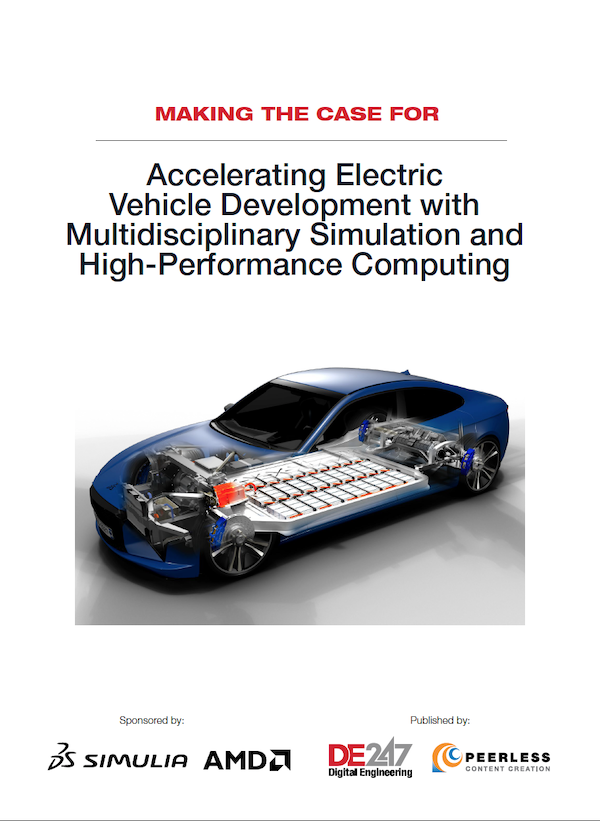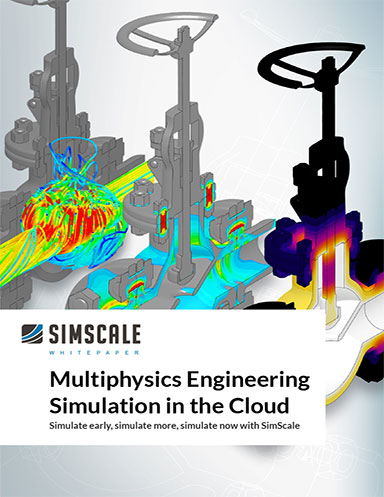Ansys Partners with Supermicro, NVIDIA
Turnkey hardware optimized for Ansys multiphysics simulation provides flexible configurations through collaborations with Supermicro and NVIDIA, according to Ansys.

5G Antenna simulation using Ansys HFSS to accurately assess performance impact of antenna placement. Image courtesy of Ansys.
July 18, 2024
Ansys is collaborating with Supermicro and NVIDIA to deliver turnkey hardware, enabling acceleration for Ansys multiphysics simulation solutions, Ansys reports. By leveraging the combined power of hardware and software, Ansys customers can solve larger, more complex models much faster.
When running on Supermicro and NVIDIA technology, Ansys solutions reduce time to market and facilitate more design exploration for a range of applications, including automotive crash testing and external aerodynamics, aerospace gas turbine engines, 5G/6G antennas, and biopharmaceutical development, according to Ansys.
Getting the most out of multiphysics simulation involves integrating different types of physics solvers with a range of hardware choices. However, sizing and configuring the right hardware for multiphysics simulation is a task that can impact performance, cost and productivity. Turnkey, customized hardware solutions with central processing units (CPUs), graphics processing units (GPUs), interconnects, and cooling modules allow engineers to run predictively accurate simulations.
Collaborative testing between Ansys and Supermicro discovered replicating the performance of Ansys Fluent and Ansys Rocky running on one NVIDIA GPU would require 1,500 and 480 CPU cores, respectively. Ansys Perceive EM running on one NVIDIA GPU achieves the same performance as 1,000,000+ CPU cores. In addition, the testing process revealed the following accelerations:
- Ansys optiSLang AI+: 1,600x speed-up
- Ansys Fluent: 24x speed-up
- Ansys Mechanical: 6x speed-up
- Ansys HFSS: 11x speed-up
- Ansys Perceive EM: 53x speed-up
- Ansys Rocky: 17x speed-up
- Ansys LS-DYNA: 4x speed-up
The speed-ups were achieved by introducing or replacing CPU cores and GPUs with NVIDIA technology. NVIDIA hardware used in testing included NVIDIA H100 GPUs, NVIDIA L40S GPUs, and the NVIDIA Grace CPU Superchip.
“The breadth and depth of the Ansys multiphysics portfolio requires a thoughtful approach to compute infrastructure with GPUs,” says Vik Malyala, president & managing director, EMEA; SVP, Technology & AI, Supermicro. “We are closely working with Ansys and NVIDIA with the broadest GPU and CPU systems offering (Hyper/CloudDC, scalable GPU systems: 4U-10U, and others) to accelerate simulations, eliminate guesswork, and improve customer deployment time worldwide.”
With NVIDIA technology designed with Ansys and Supermicro's energy-efficient server technology, engineers can reduce overhead costs and energy consumption by using fewer servers to do the same work.
“Supermicro provides exceptional architecture for Ansys solutions, reducing constraints on the number, size, and complexity of simulation models,” says Shane Emswiler, senior vice president of products at Ansys. “We remain committed to working with NVIDIA to migrate our solutions currently supported on Hopper chips to Blackwell. By offering advanced, customized configurations with Blackwell and Hopper superchips, our customers' projects can truly span the full range of physics, from fluids to electronics and structures.”
“The synergy between Ansys and NVIDIA is propelling us into a new era of technological innovation,” says Dion Harris, director of data center product solutions at NVIDIA. “Ansys simulation solutions play a key role in the development of our cutting-edge AI superchips, while NVIDIA's accelerated data center AI and digital twin platforms empower Ansys to push the boundaries of simulation performance. Together, we're unlocking deeper insights and paving the way for groundbreaking advancements that will shape the future of engineering and AI.”
Sources: Press materials received from the company and additional information gleaned from the company’s website.
More Ansys Coverage
More NVIDIA Coverage
Subscribe to our FREE magazine, FREE email newsletters or both!
About the Author
DE’s editors contribute news and new product announcements to Digital Engineering.
Press releases may be sent to them via DE-Editors@digitaleng.news.
Related Topics






